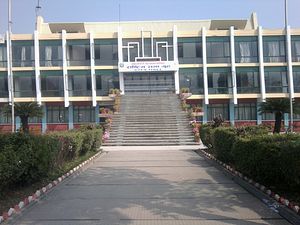Protests continue across Nepal after the country’s constituent assembly rejected calls to declare the country a Hindu state, instead retaining provisions for secularism in the draft constitution. Protests have now erupted in Kathmandu, the capital, as well. Nepali lawmakers began voting on a draft constitution on Sunday, without addressing the grievances of the protesters. The measure to retain secularism in the country’s new draft constitution received more than the two-thirds support necessary for adoption into the draft constitution. Prior to its transition to democracy, Nepal had the distinction of being the world’s only Hindu state. According to a 2011 census, Nepalis are overwhelmingly Hindu: 81.3 percent of the country are Hindu, 9 percent are Buddhist, and 4.4 percent are Muslim.
The underlying politics in the country leading up to the recent protests have primarily to do with the collapse of a coalition between Nepal’s Maoists and the the Madhesi Jana Adhikar Forum, a small political party representing the interests of Nepal’s Madhesi people. The Maoists’ decision to switch allegiances had far-reaching consequences. The Hindustan Times‘ Prashant Jha offers a succinct explanation of some of the immediate consequences of the Maoist move:
Maoists shifted sides, and signed up to a constitutional deal that reversed many of the achievements for the excluded groups. An electoral system was designed which would leave these groups of the Tarai under-represented in the national legislature; provisions on proportionate inclusion of the marginalised into state organs were dropped; draconian citizenship provisions were introduced which hurt the rights of both women and Madhesis; and federal boundaries were carved out in a manner to suit the ruling elite.
As a result, Nepal’s Madhesis and others–groups that had traditionally been excluded from the halls of power in the country’s days as a monarchy–saw their say in the country’s new constitution begin to erode. Not content to accept their lot in a draft constitution they see as unjust to Nepal’s traditionally disenfranchised groups, the Madhesis and other groups in the country’s hinterlands, began protesting. Over the past six weeks, the protests have intensified and spread. More than 40 people have already been killed in the police response.
Nepal has been governed under an interim constitution since 2007. The inter constitution was put in place after Nepal moved away from monarchy, under the rule of King Gyanendra, to a federal republic. The constituent assembly process itself has been marred by several delays. The interim constitution had originally called for the finalization of a permanent constitution by 2010. After repeated extensions, the constituent assembly was dissolved in 2012. New elections in late 2013 resulted in a new constituent assembly which pledged to finalize a permanent constitution within a year. However, the country’s politics remained polarized between a range of interests, including Hindu nationalists, monarchists, and Maoists, leading to gridlock.
The draft constitution under consideration by the constituent assembly, if adopted, would split the country into seven provinces. One source of disagreement among various stakeholders in the constitution-drafting process is the precise size and composition of these provinces. Beyond the protests outside the assembly hall in Kathmandu, Nepalis have been protesting across the country at what they see as an unrepresentative constituent assembly.
Current instability in Nepal will be deeply concerning to the country’s southern neighbor and closest benefactor, India. After the massive human tragedy and economic loss of the April 2015 earthquake, New Delhi had been eager to see a smooth resolution of the constitution drafting process. Instead, renewed instability could not only adversely affect Nepal’s economy–it could set back Indian strategic interests in the country. As Jha notes in the Hindustan Times, “India’s special relationship with Nepal, and active role in its politics, also gives it a more than legitimate space” to speak out to leaders and legislators in Kathmandu.

































